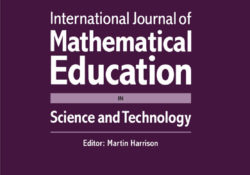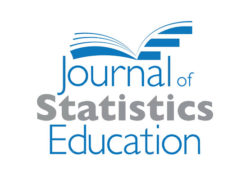tandfonline.com har udgivet en rapport under søgningen “Teacher Education Mathematics”: ABSTRACT ABSTRACT In this study, we examined a mathematician and one of his students’ teaching journals and thought processes concurrently as the class was moving towards the proof of the Fundamental Theorem of Galois Theory. We employed Tall’s framework of three worlds of mathematical thinking as well as Piaget’s notion of accommodation to theoretically study the narratives. This paper reveals the pedagogical challenges of proving an elegant theory as the events unfolded. Although the mathematician was conscious of the students’ abilities as he carefully made the path accessible, the disparity between the mind of the mathematician and the student became apparent. Link til kilde
Like this:
Like Loading...
tandfonline.com har udgivet en rapport under søgningen “Teacher Education Mathematics”: Abstract Formulae display:?Mathematical formulae have been encoded as MathML and are displayed in this HTML version using MathJax in order to improve their display. Uncheck the box to turn MathJax off. This feature requires Javascript. Click on a formula to zoom. Abstract Instructors of postsecondary classes in statistics rely heavily on visuals in their teaching, both within the classroom and in resources like textbooks, handouts, and software, but this information is often inaccessible to students who are blind or visually impaired (BVI). The unique challenges involved in adapting both pedagogy and course materials to accommodate a BVI student may provoke anxiety among instructors teaching a BVI student for the first time, and instructors may end up feeling unprepared or “reinventing… Continue Reading →
Like this:
Like Loading...
tandfonline.com har udgivet en rapport under søgningen “Teacher Education Mathematics”: ABSTRACT ABSTRACT The present study analyzes the phenomenon of linguistic accommodation, i.e. the adaptation of one’s language use to that of one’s conversation partner. In a large corpus of private social media messages, we compare Flemish teenagers’ writing in two conversational settings: same-gender (including only boys or only girls) and mixed-gender conversations (including at least one girl and one boy). We examine whether boys adopt a more ‘female’ and girls a more ‘male’ writing style in mixed-gender talks, i.e. whether teenagers converge towards their conversation partner with respect to gendered writing. The analyses focus on two sets of prototypical markers of informal online writing, for which a clear gender divide has been attested in previous research: expressive typographic markers (e.g.,… Continue Reading →
Like this:
Like Loading...


